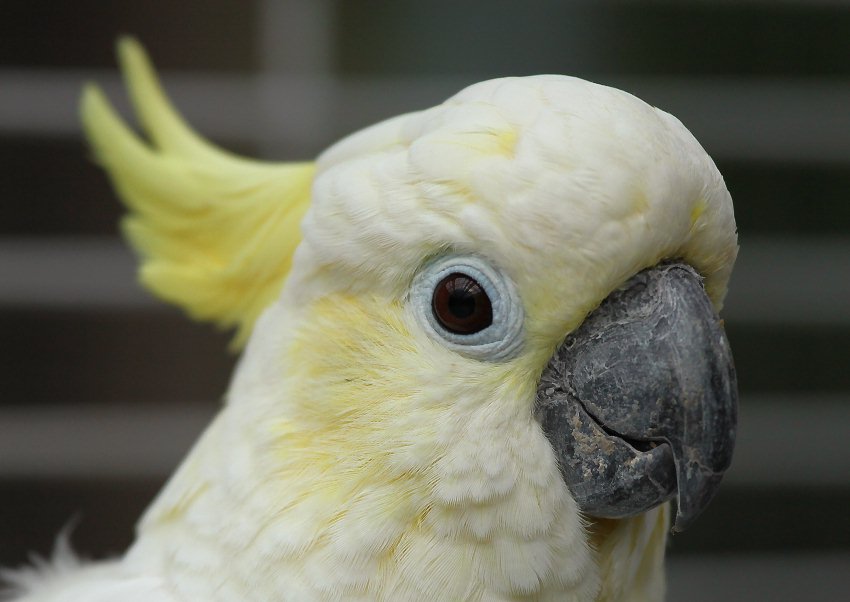

(according to the fossil record) or 66 m.y.a. While psittaciform parrots (true parrots) and cockatoos have many common anatomical attributes such as zygodactyl feet and hooked bills, the cockatoos and true parrots diverged from the ancestral parrots as separate lineages as early as 45 m.y.a. The term "white cockatoo" has also been applied as a group term to members of the subgenus Cacatua, the genus Cacatua as well as larger groups including Major Mitchell's cockatoo and the galah cockatoo. It lies in the subgenus Cacatua within the genus Cacatua.

Its species name alba is a feminine form of the Latin adjective albus for "white". The white cockatoo was first described in 1776 by German zoologist Philipp Ludwig Statius Müller. The white cockatoo is known as ayab (plural form: ayot) in the Burmeso language of Papua, Indonesia.


It is similar to other species of white cockatoo such as yellow-crested cockatoo, sulphur-crested cockatoo, and salmon-crested cockatoo, all of which have yellow, orange or pink crest feathers instead of white. The wings and tail have a pale yellow or lemon color which is exposed when they fly. When surprised, it extends a large and striking head crest, which has a semicircular shape (similar to an umbrella, hence the alternative name). Our online platform, Wiley Online Library () is one of the world’s most extensive multidisciplinary collections of online resources, covering life, health, social and physical sciences, and humanities.The white cockatoo ( Cacatua alba), also known as the umbrella cockatoo, is a medium-sized all-white cockatoo endemic to tropical rainforest on islands of Indonesia. With a growing open access offering, Wiley is committed to the widest possible dissemination of and access to the content we publish and supports all sustainable models of access. Wiley has partnerships with many of the world’s leading societies and publishes over 1,500 peer-reviewed journals and 1,500+ new books annually in print and online, as well as databases, major reference works and laboratory protocols in STMS subjects. Wiley has published the works of more than 450 Nobel laureates in all categories: Literature, Economics, Physiology or Medicine, Physics, Chemistry, and Peace. has been a valued source of information and understanding for more than 200 years, helping people around the world meet their needs and fulfill their aspirations.
#Sulfur vs yellow cockatoo professional#
Our core businesses produce scientific, technical, medical, and scholarly journals, reference works, books, database services, and advertising professional books, subscription products, certification and training services and online applications and education content and services including integrated online teaching and learning resources for undergraduate and graduate students and lifelong learners. Wiley is a global provider of content and content-enabled workflow solutions in areas of scientific, technical, medical, and scholarly research professional development and education. Its presence not only confirms the interests and purchasing power of Mantegna and his patrons, the Gonzagas, it reveals the complexity and range of South-East Asian trading networks prior to the establishment of European trading posts in the region. The Sulphur-crested Cockatoo in the Madonna della Vittoria provides a unique opportunity to place fifteenth-century Italy in its global context. I also explore the intriguing issue of how a creature native to regions generally considered to have been beyond Europe's trading reach in 1496 could have appeared in a Renaissance artwork. In this article, I consider why Mantegna would have included parrots in his altarpiece and the symbolic significance of the cockatoo's position in the composition. Although Mantegna's altarpiece has been the subject of attention in modern scholarship, the significance of the Sulphur-crested Cockatoo has not been explored. This article focuses on that image – a small but significant detail in Andrea Mantegna's Madonna della Vittoria, completed in Mantua in 1496. The earliest image of an Australasian parrot by a European artist predates the arrival of Vasco de Gama's fleet at Calicut on the Malabar Coast in 1498.


 0 kommentar(er)
0 kommentar(er)
